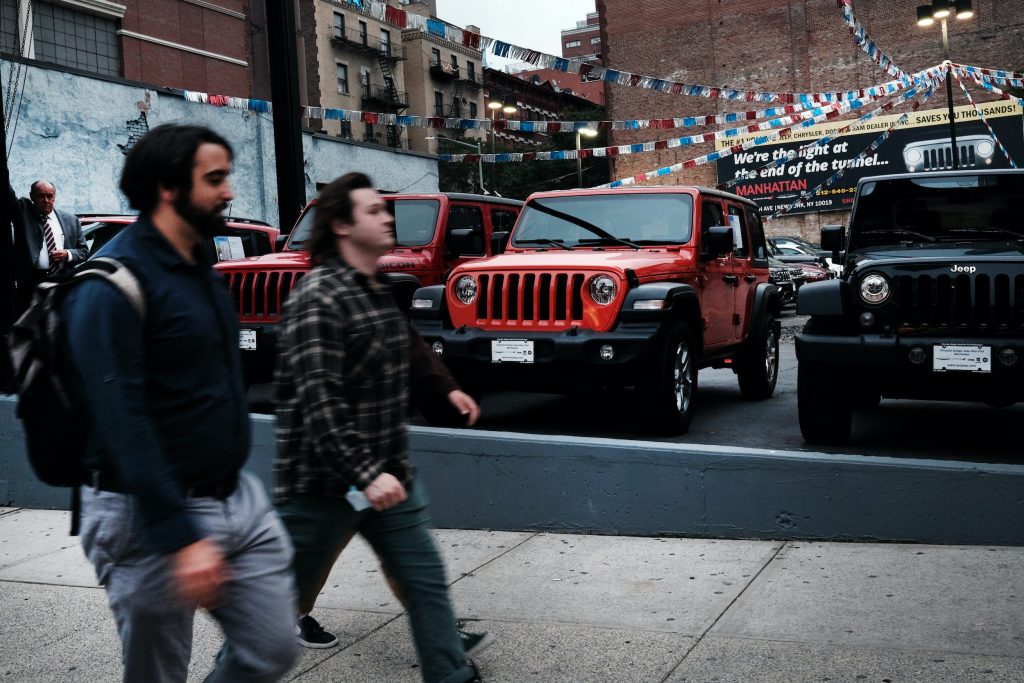- New cars have gotten way more expensive during the pandemic because of low inventories at dealers.
- Even as supply chains recover, new car prices could stay high for good.
- Car companies and dealers are enjoying fat profits and want to keep the supply of cars low.
If you’re waiting to buy a new car until the next “December to Remember” sale, forget about it: Big discounts from auto dealers may never come back.
New cars have grown more expensive during the pandemic thanks to a computer chip shortage that has squeezed the supply of vehicles and pushed carmakers to focus on building pricier models. But there’s another reason entirely that car shoppers can expect the tight inventories and stubbornly high prices to stick around long term: Car companies and dealers are loving it.
They’ve gotten used to the strong pricing power and fat profit margins that the supply crunch has afforded them and have little incentive to return to the way things were before the pandemic, when dealership lots were flush and manufacturers had to offer aggressive discounts to move cars to customers.
“The industry would have to go a long way to get back to that oversupply model, to get back to where pricing, haggling, and incentives are where they used to be, and there’s just no need to do it,” Kevin Tynan, senior automotive analyst at Bloomberg Intelligence, told Insider.
Automakers could build back up to their old production volumes and lose their stranglehold on pricing. But many have made clear they’re determined to maintain this new paradigm, or at least something close to it.
In an interview with Insider, Volkswagen of America CEO Scott Keogh said he “absolutely” sees greatly reduced supply as the “new normal.” Last year, Ford CEO Jim Farley said the company is “wasting money on incentives” and that it aims to keep inventories significantly below pre-pandemic levels.
At the beginning of May, US dealers had 1.13 million new cars on hand, 2.2 million fewer than the same time in 2020, according to Cox Automotive. The amount dealers are able to charge has shot up as a result.
In April, the average new car sold for $45,736, $685 above manufacturer-suggested retail price, according to Edmunds. The average spend three years prior was around $37,000, including a $2,500 discount to MSRP. The hikes are particularly mind boggling for sought-after models like the Jeep Wrangler SUV, which now commands nearly $9,000 over sticker, according to automotive researcher iSeeCars.
It’s plain to see why automakers like the way things are going; they’re making more money even amid slumping sales. In 2021, General Motors’ profits jumped 47% to $14.3 billion despite selling 500,000 fewer vehicles than the previous year.
Dealers, too, have fared incredibly well and want to keep the party going. Mike Manley, CEO of AutoNation, the country’s biggest auto dealer, told Bloomberg the pandemic has pressed a “reset button” for car sales, adding that vehicles will sell for MSRP going forward and big discounts are over.
Pete DeLongchamps, senior vice president at Group 1 Automotive, a large dealer group, told Insider he hopes dwindling inventories bounce back to an “equilibrium” that’s easier on buyers but maintains the company’s strong margins.
Don’t hang up those haggling boots just yet, though.
Historically, automakers have squandered opportunities to shift to a lower-volume, more profitable way of doing business, according to Tyson Jominy, JD Power’s vice president of data and analytics. Keeping prices high will require discipline all around, and if some automakers start flooding the market with cheaper cars, the whole house of cards could come tumbling down, he said.
“Despite a lot of proclamations in the past and the industry enjoying more profitable times when volumes are perhaps a bit lower … eventually the pricing discipline breaks down and we kind of go back to the old ways,” Jominy said.

